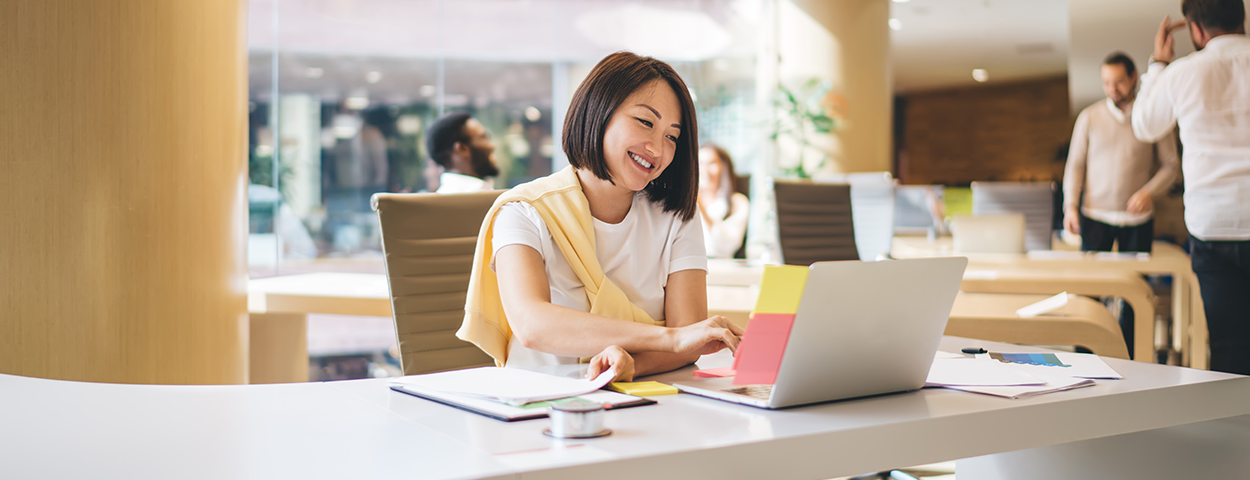
How a sustainable coworking space can make you – and the planet – healthier
6 June 2022
Here we are — two years on from the pandemic turning our entire world upside down. Every aspect of life has shifted, especially the way we work. As offices begin to reopen, many organisations are grappling with how to adapt and build a better way of working. From creating hybrid workspaces to experimenting with hybrid remote work models, let’s explore what’s next and what it could mean for people and the planet.
What is a hybrid workplace model, and why is it on the rise?
Well, the verdict is in: full-on remote work isn't working for most businesses or people. According to a OnePoll survey, remote workers “experienced negative mental health impacts” after just a year of working from home.1 However, there is a rising consensus that despite the struggles that come with remote work, it does have its merits. More flexibility, increased personal time, and an overall greater opportunity for work-life balance rank at the top of its advantages.
In response to these conflicting pressures, organisations are reimagining what work can be. Many are implementing a hybrid workplace model, which allows employees to split their work week between home and the office, a compromise aimed at unlocking a host of benefits — from increasing productivity and collaboration to improving corporate culture and employee well-being.
Hybrid work: the best or worst of both worlds?
Despite its positive aspects, a hybrid workplace model may actually do more harm than good for corporations and the environment. For one, a half-empty office cannot reduce energy consumption in proportion to its occupancy. Additionally, employees working from home would also be increasing their personal energy consumption. “This split could result in consuming more energy and emitting more emissions as both homes and offices are fully operating to enable teleworkers and office workers to do their jobs”, states a study published by the Carbon Trust and Vodafone Institute for Society and Communications.2
Creating a sustainable hybrid workplace
Applying a sustainable hybrid workplace model to a traditional office is simply untenable in the long run, both financially and environmentally. In fact, companies like Netflix, Meta and Citigroup have begun recalling employees to full in-person work. They've simply invested too much in their offices to let them sit mostly empty. While it makes sense on paper, their actions may result in backlash from employees. Based on multiple surveys from the US, up to 60% of employees may be willing to resign if ordered to return to the office.3,4
Fortunately, a paradigm shift in the commercial real estate industry is opening up new office solutions for businesses. Enter: Space-as-a-Service (SPaaS). Put simply, it is space provided on demand. This new real estate model allows organisations to pay for space as and when they need it, enabling them to expand and contract their office sizes as required, in response to the fluctuating work environment. When organisations use a SPaaS model like Csuites, they can bypass the challenges of transforming their old office environments and enjoy plug-and-play offices optimised for people and the planet's benefit. This facilitates more flexible working arrangements, allowing employers to cultivate and support a thriving hybrid remote work culture while also lowering their operational costs.
The future of work can be more sustainable
The world of work has a role to play in nurturing the health of people and the planet. Employers can switch to energy-efficient buildings, leverage technology to reduce resource consumption, and reimagine how and where they operate. But developers must do their part too and Lendlease is rising to the challenge. With its Mission Zero pledge, Lendlease is racing towards becoming 100% carbon-free by 2040.
Lendlease’s efforts to play a meaningful role in building a more sustainable future have already begun to show results. Its award-winning flexible workplace Csuites received a Greenmark – HPB Healthier Workplaces rating from the Building and Construction Authority and Health Promotion Board (BCA-HPB) in 2020, in recognition of its sustainable and energy-efficient design.
Csuites has managed to provide organisations with the best of both worlds: a new generation workplace solution that combines the best of traditional office spaces with dynamic co-working environments. Visit Csuites to discover how hybrid workspaces designed with people and the planet in mind can benefit your organisation.
1 Remote Workers Report Negative Menal Health Impacts, New Study Finds (2021). Forbes. Retrieved from https://www.forbes.com/sites/bryanrobinson/2021/10/15/remote-workers-report-negative-mental-health-impacts-new-study-finds/?sh=31b84d5174b8
2 Homeworking report: An assessment of the impact of teleworking on carbon savings and the longer-term effects on infrastructure services ((2021). Carbon Trust and Vodafone Institute for Society and Communications. Retrieved from https://www.vodafone-institut.de/wp-content/uploads/2021/06/CT_Homeworking-report-June-2021.pdf
3 More Than Half of Workers Would Consider Quitting Before Returning to the Office (2022). Bloomberg. Retrieved from https://www.bloomberg.com/news/articles/2022-01-12/omicron-has-workers-on-edge-about-returning-to-the-office-poll
4 Employees are going to quit if forced to return to the office (2021). Employee Benefits News. Retrieved from https://www.benefitnews.com/news/employees-are-going-to-quit-if-forced-to-return-to-the-office